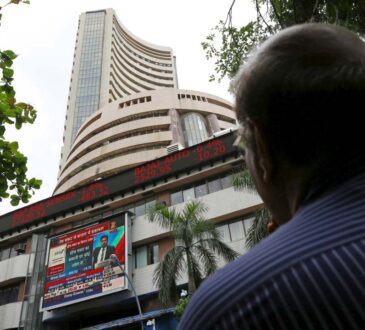
By Michael Brush
10 signs that stocks are short of breath
Substantial U.S. stock-market pullbacks happen in July more than any other month.
Because they’re being deluged with questions from clients about whether the U.S. stock market is ready to roll over, Bank of America quantitative strategist Savita Subramanian and her team recently posted 10 quantitative measures that historically signal bull-market tops.
Four of the 10 say we’re there. But tops typically do not happen until at least seven of the 10 indicators trigger warning signs.
So what do you do now? Nothing, if you are a long-term investor who dollar-cost averages into the major U.S. stock-market benchmarks: the S&P 500 SPX, the Dow Jones Industrial Average DJIA, and the Nasdaq Composite COMP.
What about market timing? Few people get it right. For example, if you missed the 10 best days for the S&P 500 between 2010 and 2020, you gained 95% instead of 190%. Similar performance gaps impacted investors in the 1980s, 1990s and 2000s. “Remaining invested is generally superior to emotional selling,” Subramanian said.
That said, if you are a trader or buy stocks on margin, it might be wise to tap on the brakes. Maybe take starter positions only, or none at all, since you might get better prices ahead. July is notorious for market pullbacks. Substantial U.S. stock-market pullbacks happen in July more than any other month, noted Jason Goepfert at SentimenTrader.
Below is a look at the Bank of America analysts’ four market-top indicators flashing red, and six more to monitor for warning signs.
Some quick perspective. Many of these indicators are sentiment indicators. You may think it’s bullish when investors and consumers are extremely positive. But actually, the opposite is true, in the contrarian sense. It’s not a good sign when the crowd turns bullish. The crowd is often wrong in the stock market, due to the pitfalls of groupthink.
Four signs this market is topping
1. The Conference Board’s consumer-confidence index typically hits 110 within six months of a market peak. This indicator hit 111 in January. It’s a contrarian signal of overconfidence among consumers, suggesting they may have to pull back on shopping soon.
2. The net percentage of people in Conference Board surveys who are bullish on stocks exceeds 20% in the six months leading up to a peak. This gauge was recently at 23%, triggering this indicator. To calculate it, take the percent expecting higher stock prices and subtract the percent expecting declines.
3. Banks normally tighten lending standards before market peaks. They probably sense a slowdown – or worse. The analysts noted that 16% of banks in the Senior Loan Officer Opinion Survey said they are tightening loan standards. That’s high enough to raise a red flag.
4. An inverted yield curve historically signals weakening growth expectations. In five of the past eight bear markets, the yield curve inverted in the six months ahead of the selloff. The yield curve has been inverted since July 2022, the longest inversion on record. So far it has failed to predict a recession.
Six triggers to watch
Just three of the six gauges below need to turn cautionary for the analysts’ system to call for a market peak.
1. There’s often a surge in mergers and acquisitions ahead of market peaks, as CEOs and boards get overconfident. This signal gets triggered when the number of M&A deals is greater than one standard deviation above the 10-year average. This gauge is not even close to signaling a market peak.
2. High valuations often signal tops. This one is close to a warning sign. Bank of America’s indicator sums the trailing P/E of the S&P 500 and the year-over-year change in the U.S. consumer price index to get a current 27.0. That is 0.9 standard deviations above the 10-year average, or just shy of the one-standard-deviation cutoff that signals a market peak.
3. Ahead of market peaks, growth stocks outperform value ones. Value has indeed lagged growth over the past six months – but not by the 2.5 percentage points necessary to signal a market peak. Here, the analysts compared the top and bottom deciles of the S&P 500 by forward P/E.
4. The market typically tells us there is going to be debt trouble ahead of market peaks. Here, the analysts tracked a proprietary credit-stress indicator. It looks at things such as the availability of credit, lending levels, credit-agency debt-rating changes, and the amount of troubled debt. This one is on a scale of 0-1.0 and higher is better. This indicator normally drops below 0.25 within six months of a market peak. It currently stands at 0.39.
5. Bank of America strategists follow a proprietary sell-side indicator that measures Wall Street strategists’ suggested allocation to stocks vs. cash. The latest reading is in neutral territory, halfway between buy and sell.
6. Similarly, Bank of America tracks the long-term growth expectations for S&P 500 companies among sell-side analysts. This is a contrarian indicator. The more bullish analysts are, the more likely stocks will decline. Typically peaks occur when growth expectations are one standard deviation above average. It’s now at .02 standard deviations above the one-year average, or far from predicting a market peak.
Three peak indicators you can safely ignore
Many analysts are making a big deal out of the fact the that S&P 500 is being driven higher by large-cap tech names including Nvidia Corp. (NVDA)), Apple Inc. (AAPL), Amazon.com Inc. (AMZN), Microsoft Corp. (MSFT) and Alphabet Inc. (GOOGL) (GOOG). “But mega-cap leadership alone is not cause for alarm,” said Bank of America. “Mega-cap leadership years were followed by gains about 75% of the time.”
Likewise, you’re going to hear a lot of analysts telling you that the persistently low Chicago Board Options Exchange’s CBOE Volatility Index, known as VIX, VIX is a negative indicator for stocks. Ignore them. Historically, a low VIX “is not necessarily an indication of an overly complacent market ripe for a blowup,” the analysts said.
Finally, there’s a measure called “r-star,” thought to be the neutral short-term interest rate for the U.S. economy. Currently, r-star is just above 1%, or well below the federal-funds rate of 5.25%-5.5%. This suggests the fed-funds rate is contractionary, which will cause an economic slowdown or worse.
But r-star was well below the fed-funds rate during all of the bull markets during the 1970s through the 1990s, effectively rendering this indicator useless. Despite the seemingly restrictive r-star, stocks “can still post strong returns given lower leverage and lower floating rate risk compared to prior cycles,” Bank of America concluded.
Michael Brush is a columnist for MarketWatch. At the time of publication, he owned NVDA, AAPL, AMZN, MSFT and GOOGL. Brush has suggested NVDA, AAPL, AMZN, MSFT and GOOGL in his stock newsletter, Brush Up on Stocks. Follow him on X @mbrushstocks.
Read on:
Even the bulls are getting trampled by the tech-sector-heavy U.S. market. A melt-up could be coming.
Stocks will fall 30% as the U.S. economy heads for a painful recession, strategist says
-Michael Brush
This content was created by MarketWatch, which is operated by Dow Jones & Co. MarketWatch is published independently from Dow Jones Newswires and The Wall Street Journal.
(END) Dow Jones Newswires
07-06-24 0927ET
Copyright (c) 2024 Dow Jones & Company, Inc.

